Fly Identification & Control
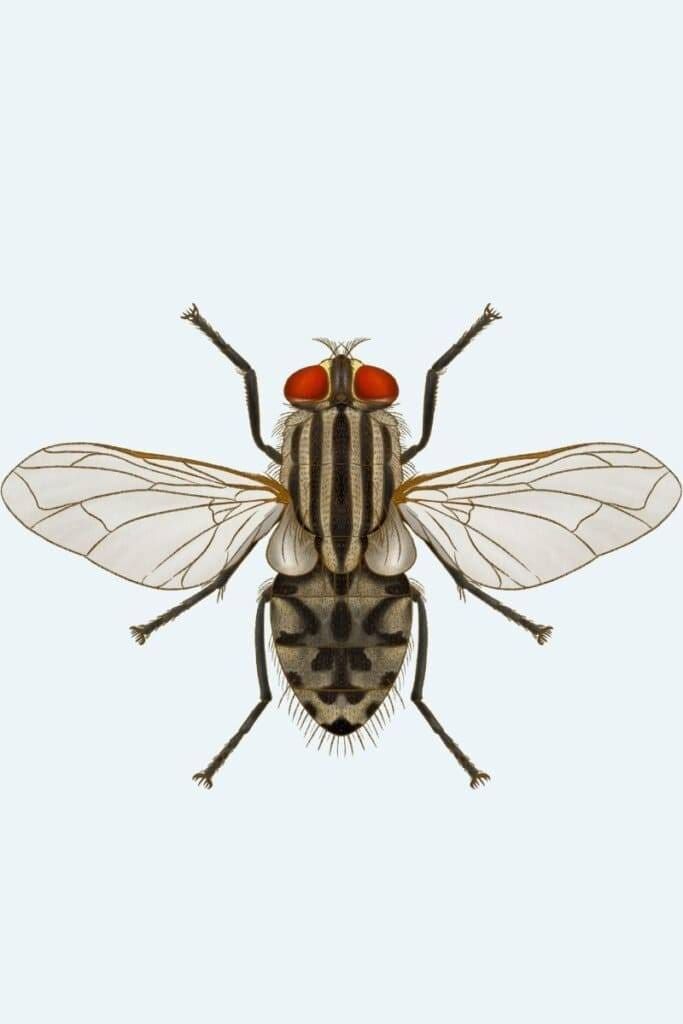
About Flies
Flies are common urban pests that thrive in environments with moisture and decaying organic matter. They are a major concern in homes, businesses, and outdoor spaces, as they can spread bacteria and cause other health risks.
Appearance
Household flies have small bodies, often with transparent or grayish wings, and can vary in color from light tan to dark brown. Unlike other indoor flying insects, flies only have a single pair of wings alongside a pair of smaller club-shaped organs called halteres.
Behavior
Most flies are weak fliers that tend to remain close to their breeding sites. They are attracted to food, organic waste, and areas with moisture, such as sinks, drains, and compost piles. Some, like fruit flies, are drawn to sugary substances and fermenting materials, which is why they are often spotted around ripe fruits and spilled beverages indoors.
Flies have short lifespans but reproduce quickly in large numbers (a single female can lay up to 500 eggs). Eggs typically hatch within 24 hours and the entire lifecycle—from egg to adult—can take as little as 7 to 10 days.
Risks
Due to their unsanitary feeding habits, flies contaminate food and surfaces where they land. The common house fly, for instance, is a potential vector for at least 65 diseases, including typhoid fever, dysentery, and cholera.
Biting flies can inflict painful bites that may leave welts or lesions, and sensitive individuals might experience allergic reactions from their bites.
Identification
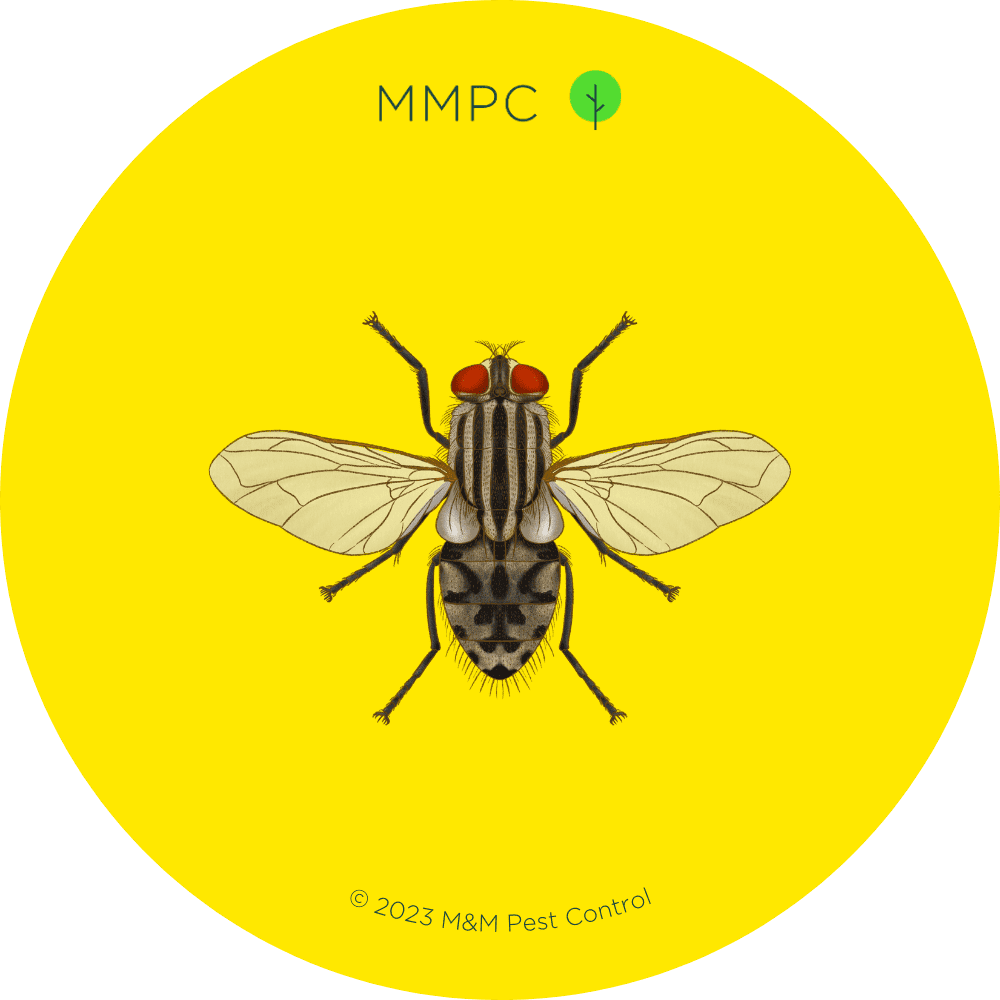
House Fly
House flies (Musca domestica) are the most common type of fly found indoors. They feed and breed on decaying organic matter and are a common sight around kitchen garbage and spoiled food. Infestations are often a result of poor sanitation.
While they don’t bite, house flies have been known to transport harmful bacteria and can spread diseases like typhoid fever, dysentery, and cholera by contaminating food and surfaces.
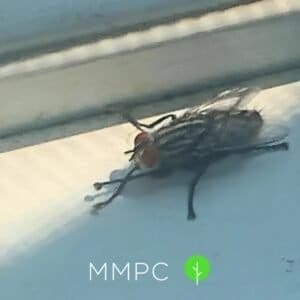
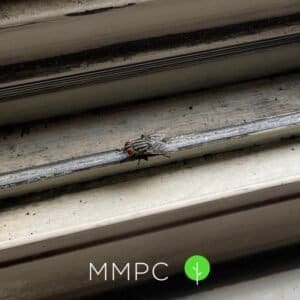

Size: 1/4″ (6 – 7 mm)
Color: Dull gray and black with red eyes
Identifying Features:
- 4 dark, longitudinal stripes on the thorax
- Striped or checkered markings on the abdomen
- Large, red compound eyes
- Clear, membranous wings with a yellowish tinge
- Tiny antennae
- 6 legs
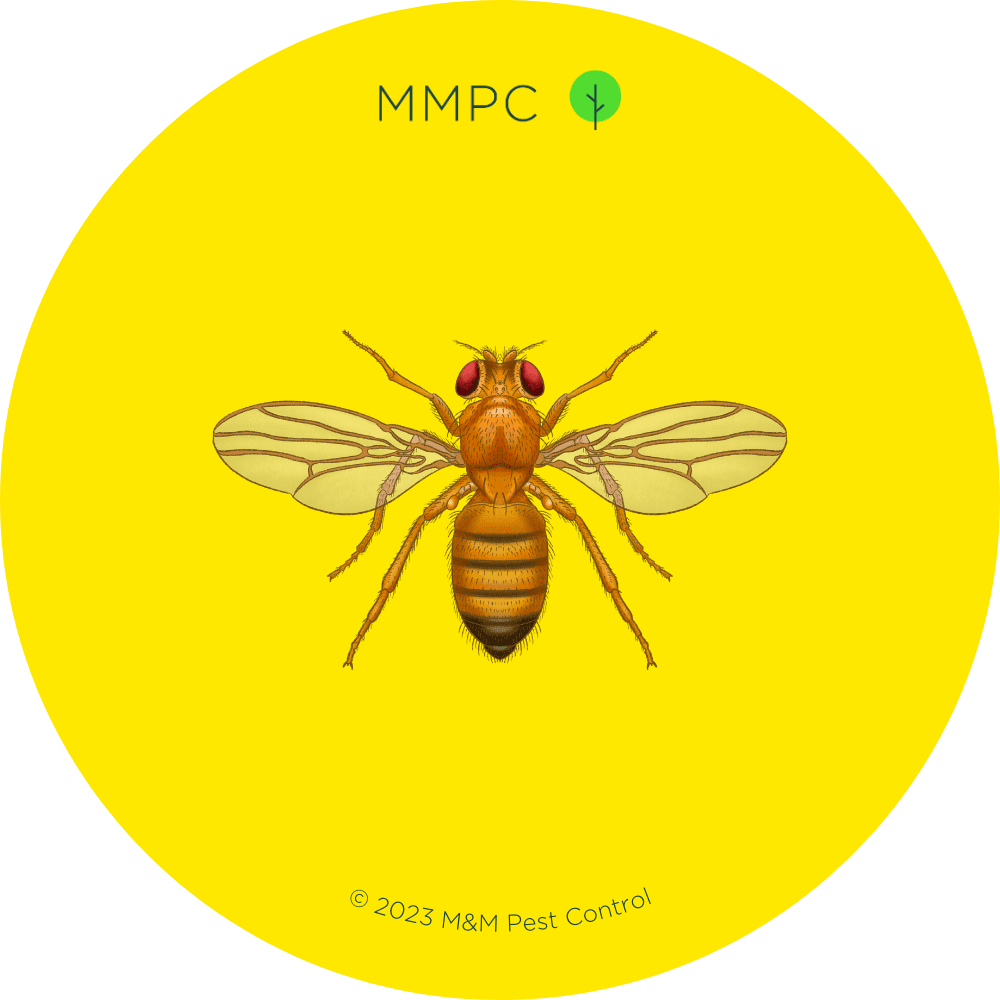
Fruit Fly
Fruit flies (Drosophila melanogaster) are attracted to ripe and overripe fruits and vegetables. They often enter homes as microscopic eggs on the surface of moist or overly ripened produce from gardens or grocery stores.
Once indoors, fruit flies mature and reproduce rapidly—a single female can lay up to 500 eggs, which hatch and develop into adults in about a week.
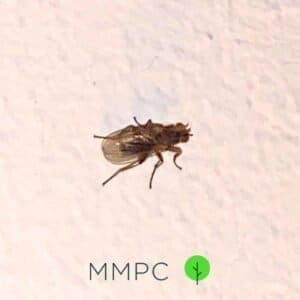
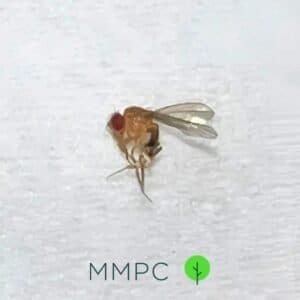
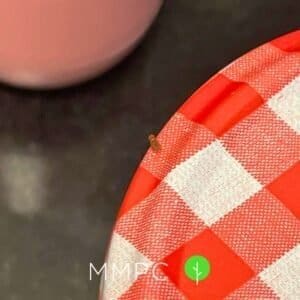
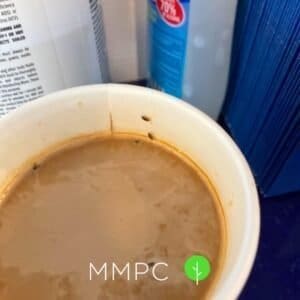
Size: 1/10″ – 1/6″ (3 – 4 mm)
Color: Brownish-yellow with red eyes
Identifying Features:
- Black stripes on the abdomen
- Large compound eyes, usually bright red or reddish-brown
- Clear, membranous wings
- Tiny antennae
- 6 legs
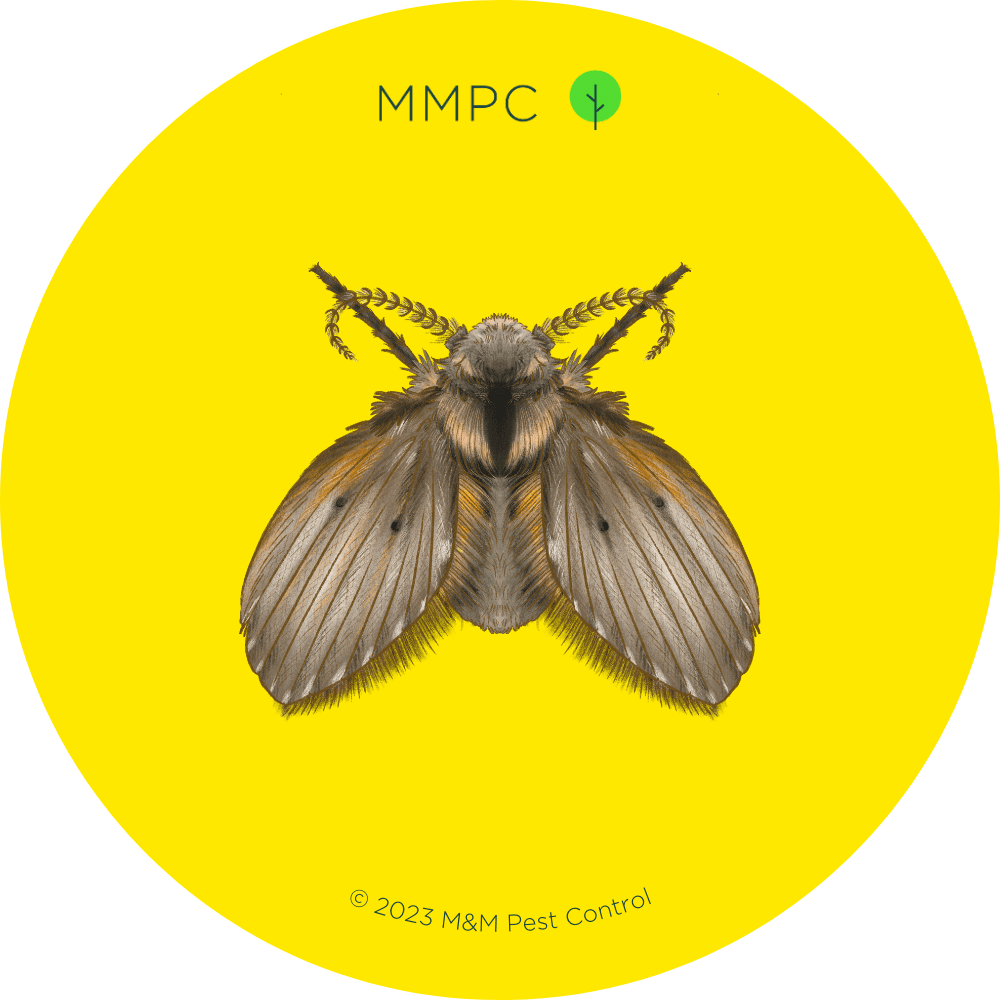
Drain Flies / Moth Flies
Drain flies (Psychoda spp.) are weak fliers that tend to make short, hopping flights when disturbed. They resemble tiny moths that infest bathrooms and kitchens in large numbers, usually as a result of a slow or clogged drain. They feed on bacteria and the moist, slimy, organic matter that collects around sinks, bathtubs, and floor drains.
While they do not bite or spread diseases, drain flies can contaminate food and water. Heavy infestations may also trigger asthma and allergies.
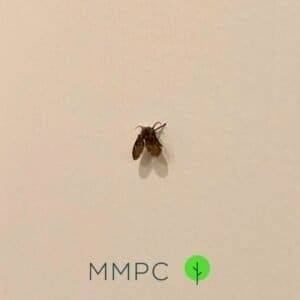
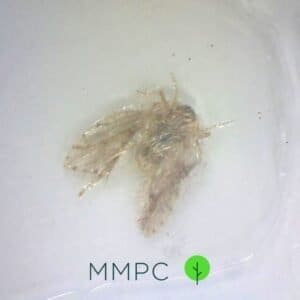
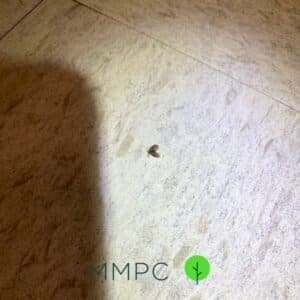

Size: 1/8″ – 1/5″ (2.5 – 5 mm)
Color: Light tan to dark grayish-brown
Identifying Features:
- Fuzzy, moth-like body
- Broad, oval-shaped wings covered in grayish-brown hairs
- Long, 13-segmented antennae with whorls of light-colored hairs
- 6 legs
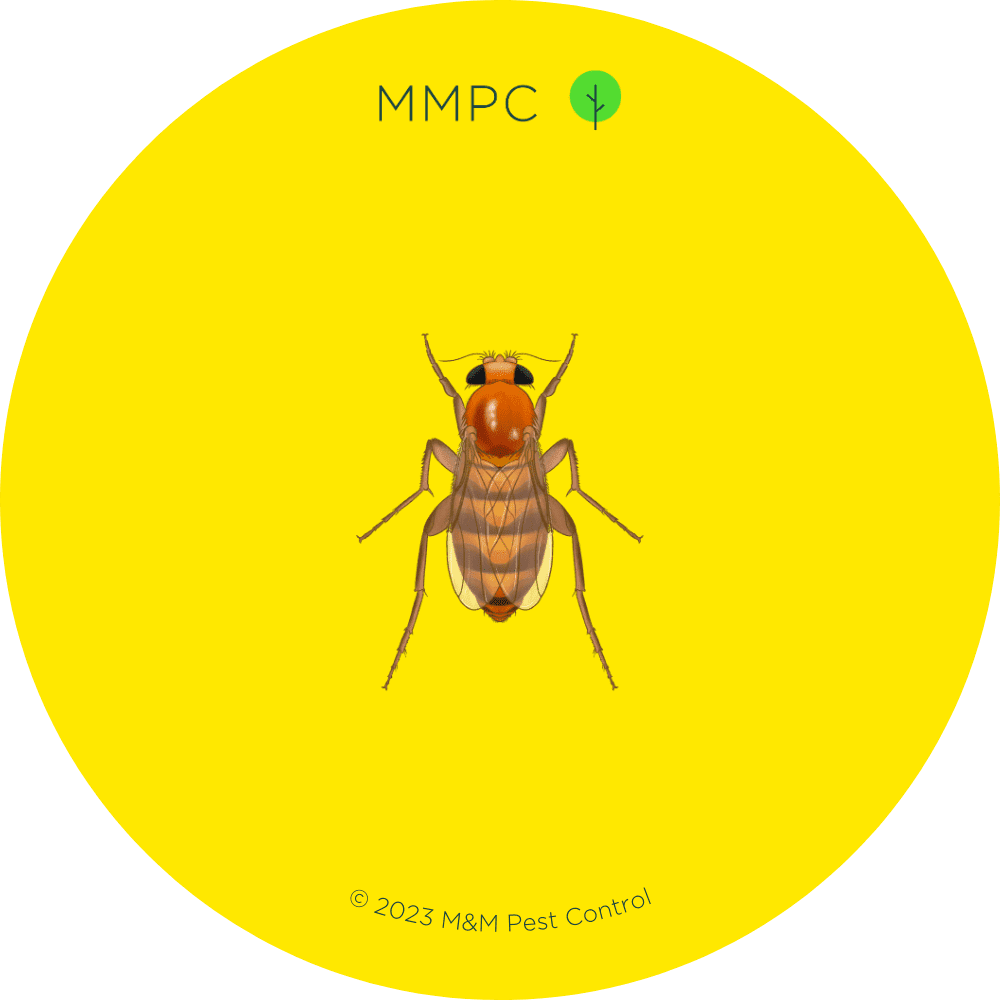
Phorid Flies
Phorid flies (Phoridae spp.), also known as “scuttle flies,” are distinguished by their humped backs and quick, erratic movement patterns.
Commonly found around decomposing organic matter, including drains and garbage, phorid flies spread bacteria as they travel from unsanitary sites to human-occupied spaces. Their small size and fast movements can make them difficult to catch.
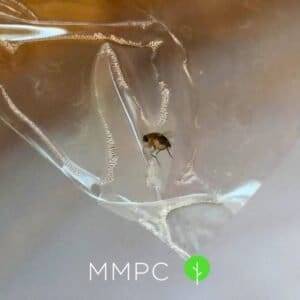
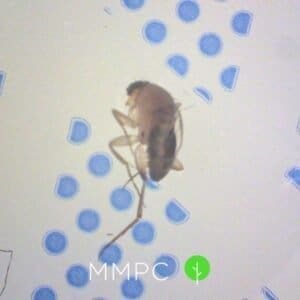
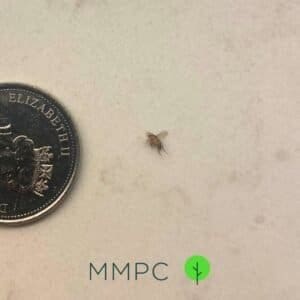
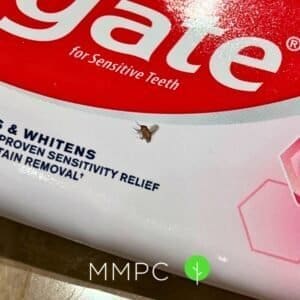
Size: Varies by species, from 1/64″ (0.5 mm) to 1/4″ (6 mm)
Color: Brown, black, or yellow
Identifying Features:
- A strongly arched thorax, giving it a hump-backed appearance
- Large, black compound eyes
- Clear, membranous wings
- Tiny antennae
- 6 legs
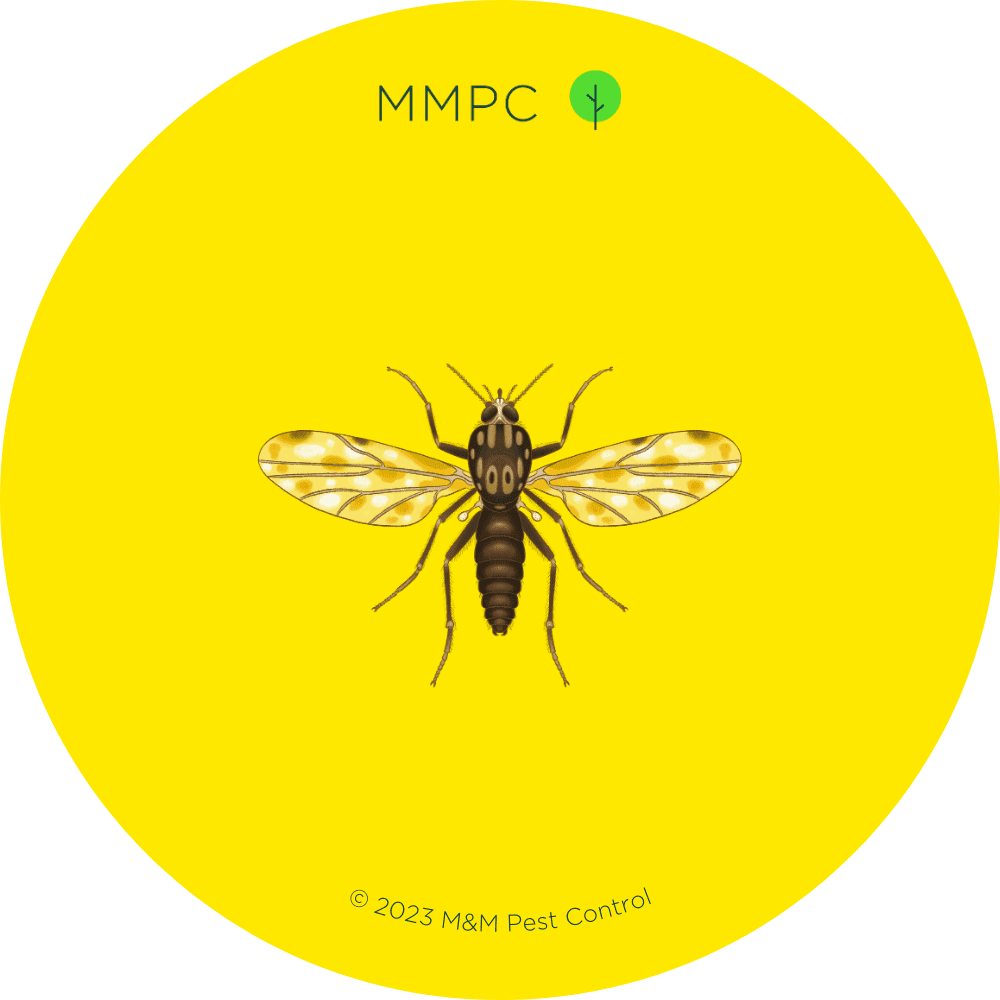
Biting Midges / No-See-Ums
Biting midges (Culicoides spp.) are tiny, bloodsucking flies that inflict sharp, painful bites on exposed skin, leaving behind burning or itching sensations, reddish bumps, and sometimes welts or blisters.
Due to their tiny size, they are hard to see and can easily crawl through window and door screens to get indoors. They are most active around dawn and dusk, although biting can also take place at night.
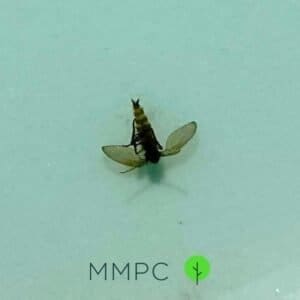
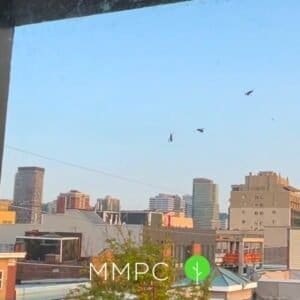
Size: 1/25″ – 1/8″ (1 – 3 mm)
Color: Gray or black
Identifying Features:
- A long, tapered abdomen that becomes swollen and red after feeding on blood
- Membranous wings with light and dark markings
- 15-segmented antennae
- 6 legs

Dark-Winged Fungus Gnats
Dark-winged fungus gnats (Sciaridae spp.), which resemble tiny mosquitoes, are often found around houseplants and in damp indoor areas. They are attracted to moist soil and organic matter, where they lay their eggs.
The larvae feed on fungi, decaying plant material, and occasionally plant roots, which can harm seedlings or stress potted plants. While adult fungus gnats are mostly a nuisance as weak fliers hovering near plants or light sources, their presence indicates excessive moisture or poor soil drainage.
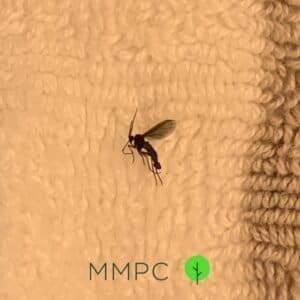

Size: 1/16″ – 1/8″ (1 – 3 mm)
Color: Dark brown
Identifying Features:
- Delicate, mosquito-like body with a slender abdomen
- Dark or smoky-gray wings
- Long antennae with 8-16 segments
- 6 spindly legs
Control
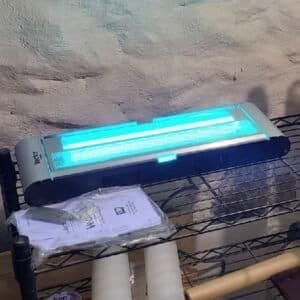
How to Get Rid of Flies
Our top recommendation for clients with persistent fly infestations is to improve sanitation practices. Flies are drawn to organic waste, so regular garbage disposal, cleaning, and clearing out decaying organic matter are important steps. In homes, keeping food preparation areas clean and promptly addressing spills further reduces breeding opportunities.
Fly Traps
Fly traps can help manage populations of indoor flies. Yellow sticky traps are effective for capturing adult flies, especially near potted plants or other moist areas. For fruit flies, vinegar or fruit traps are commonly used indoors. UV light traps can be helpful in commercial or residential settings by drawing flies away from sensitive areas.
Exclusion
Prevent flies from entering your home, particularly in kitchens and bathrooms, by using screens on windows and doors and sealing any cracks where flies might enter. Exclusion measures are particularly effective for preventing infestations of biting midges and no-see-ums, as these flies can be attracted to lights and enter through small gaps.

How to Get Rid of Drain Flies
To manage drain flies, it is essential to remove organic buildup in drains where larvae develop. A stiff brush, combined with enzymatic cleaners, can help eliminate the biofilm inside drains that serves as a breeding ground. Sticky traps placed over drains can help confirm the presence of drain flies and assess the infestation level.
Flushing Drains
Boiling water and baking soda can be used to flush out buildup in the pipes and minimize breeding conditions. However, these methods alone won’t eliminate infestations, as they don’t fully remove the organic film inside drains that supports larvae. For best results, follow up with a scrubber or drain cleaner.
Note: Avoid using boiling water if you have PVC pipes, as it can damage them.
Plumbing Issues
Drain flies are often a symptom of plumbing issues, such as leaks or poor drainage. Addressing these issues can eliminate breeding habitats, as drain flies need stagnant, moist environments with organic matter to thrive. Ensuring proper drainage flow and removing any standing water also prevents drain fly populations from reestablishing.
FAQs

Where Do Flies Come From?
Flies often find their way into homes through various entry points, capitalizing on our daily activities and the environment around us. One of the most common ways flies enter homes is through open doors and windows. During warmer months, homeowners frequently leave these openings ajar to let in fresh air, inadvertently inviting flies inside.
Other potential entry points for these pests are:
- Tiny gaps or unsealed cracks around windows
- Rips in screens
- Openings around plumbing
- Cracks in the foundation.
Additionally, poor sanitation practices—such as leaving food out or failing to clean up spills—can attract flies and encourage them to settle in your home.
Flies are mostly active in summer. As temperatures increase, their activity rises because of greater food availability and optimal breeding conditions. Infestations are most likely to happen during this time.
Does Citronella Repel Flies?
Yes, but only slightly. Since it works by masking scents that attract insects, it isn’t very useful for controlling or completely repelling adult flies. It’s best to use commercial repellents instead.
Although citronella may not offer the same duration of protection as synthetic repellents like DEET, it can be a safer option for individuals worried about chemical exposure. It’s important to reapply it regularly to make sure it works effectively.
Our Services


Need help getting rid of flies? Talk to one of our pest experts today.


